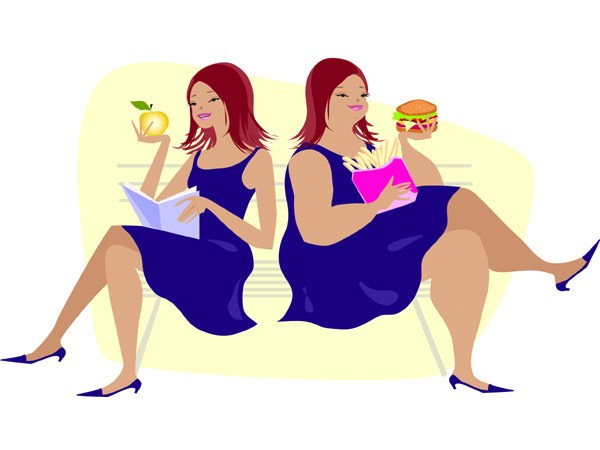You might think you’re determining how much food you’re eating but you’re not.
A recent study published in the Consumer Research Journal has found two ways in which the brain tricks you into eating more (or less) without realizing it. If you’re looking for a few pounds to shed, then learning those insights could offer a painless way to do that.
1. Let your platform test your portion
In one experiment conducted by Cornell University’s Brian Wansink and the Georgia Institute of Technology’s Koert van Ittersum, it was found that a change from 12-inch plates to 10-inch plates resulted in a 22 percent reduction in calories.
Experts have long known that using a smaller plate is an easy way to cut calories while eating less.
If the typical dinner is 800 calories, this simple change will result in an expected weight loss of over a year of more than 10 pounds. Although studies have repeatedly shown that smaller plates lead to smaller portions, the explanation for this reduction has been unclear until recently. Wansink and van Ittersum concluded that, due to a strong optical illusion known as the Delboeuf Illusion, smaller plates lead us to eat less. The illusion works because when we equate things with bigger things, we think things are smaller. When you put a small piece of food on a large plate, your brain will remind you that you’re consuming a small piece of food and you’ll put more food on the plate immediately. When you place that same piece of food on a small plate, though, your brain will convince you that you’re eating a large portion and you’re going to stop consuming meat. The following picture depicts the concept of Delboeuf and how it relates to meat.
2. Choose a color to make life easy
Not the only thing deciding how much you eat is the size of your plate. Wansink and van Ittersum have found that your plate’s color is also essential. The researchers found that when the color of the plate of a participant matched the color of their meat, they consumed approximately 30 percent more of themselves. In other words, when you eat pasta on a dark red plate with red tomato sauce, you ate almost 30% more than you would if you used a white plate. The same applies to eating pasta on a white plate with a light Alfredo sauce compared to a dark red plate.
The reason behind this drastic difference in serving size is that when your food’s color blends in with your plate’s color, then the amount of food doesn’t seem to be as large.
The result is you’ll end up scooping on the plate with more food. To get a sense of this effect, look at the color contrast in the image below
The higher contrast between the color of the plate and the color of the food automatically prevents you from throwing an extra scoop onto the plate. This isn’t typically something you’re going to think about, your mind’s just going to realize you don’t need another service.

